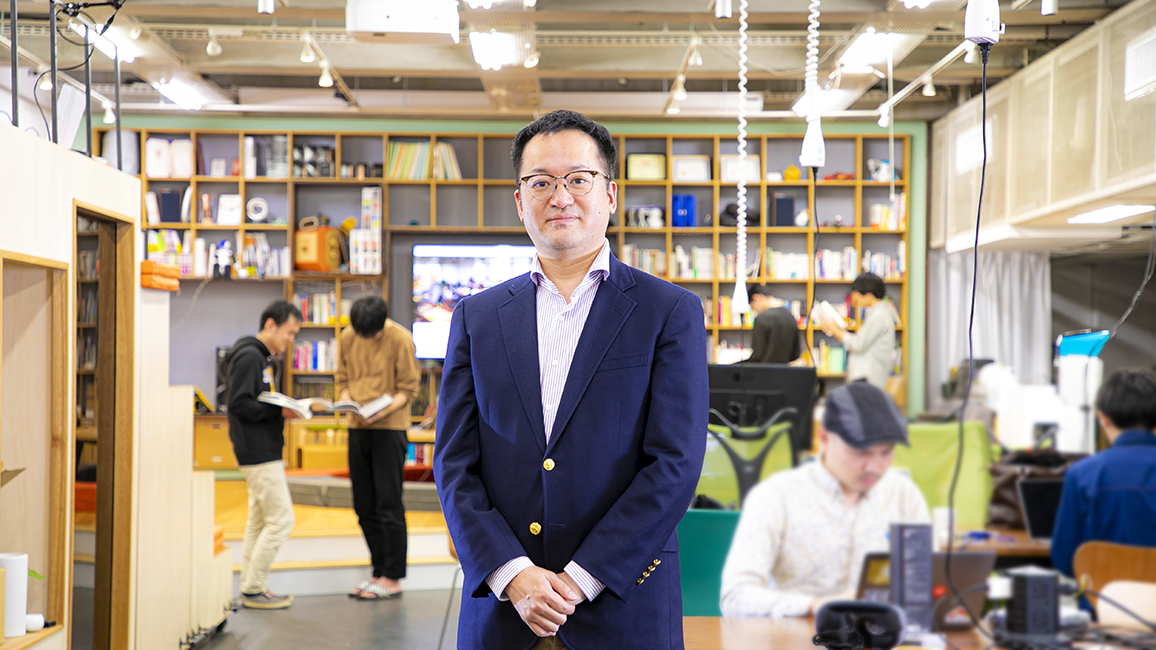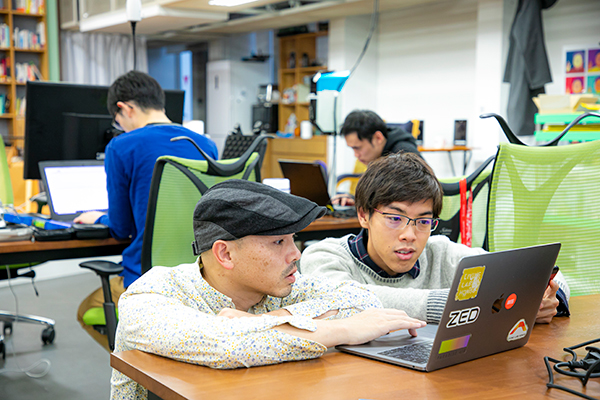Researchers at the University of Tokyo are developing interchangeable robot arms that can be worn like a backpack.
The device, called “Jizai arms,” is rooted in the idea of “jizai,” a Japanese term Inami says roughly defines autonomy and the freedom to do as one pleases.

JIZAI ARMS is a supernumerary robotic limb system consisting of a wearable base unit with six terminals and detachable robot arms controllable by the wearer. The system was designed to enable social interaction between multiple wearers, such as an exchange of arm(s), and explore possible interactions between digital cyborgs in a cyborg society.
The ‘JIZAI ARMS’ design process, an interdisciplinary collaboration between human augmentation researchers, product designers, a system architect, and manufacturers, to realize a technically complex system while considering the aesthetics of a digital cyborg. We also provide an autobiographical report of our first impressions of using the JIZAI ARMS and use our findings to speculate on a model of potential social interactions between digital cyborgs.
https://jizai-arms.com/
Inami-Hiyama-Uriu Laboratory

“Human Augmentation” and “Jizai” technologies for more free movement of human body
The Information Somatics (Inami-Hiyama-Uriu) Lab is working on research for realizing “more free movement” of human body; the aim is to use technology to enable humans to perform the tasks they want to do in a way that is more aligned with how they want to do them. To achieve this, the lab is conducting research and development on “human augmentation” especially in the “Jizai Body Project,” which expands human capabilities by coordinating human movement with machines and computers to create a “human-machine synergy.”
Building augmentation technology, and understanding augmented humans
Our lab is proposing the concept of “Jizai-ness” or “more free movement” using machines and technology to assist humans in doing the things they want to do; we are working on making this concept a reality in society. This is in contrast to the concept “automation”, in which machines perform the tasks humans don’t want to do.
To realize jizai-ness concept, we are conducting research and development on “human augmentation”, which is technology that enhances the perception and expands the movement capabilities of humans by creating a “human-machine synergy”, whereby human movement is coordinated with machines and computers. We aren’t just building the technology to enable “jizai-ness”; we’re also endeavoring to gain a systematic understanding of humans and how they perceive and try to make use of their augmented body.
For instance, our lab has developed the MetaLimbs device, which comprises two robotic arms that can be operated by legs and feet. We are currently verifying the “human-machine synergy” sensation of these “new arms” that are maneuvered using the feet. Our lab also has other devices developed by the Master’s Program students, including a fingertip-worn microscope MagniFinger.
We can create the technology, even if there is no Doraemon
Ever since I was a kid, I’ve never really been good at sports. I remember once carefully climbing up a tree bit by bit and trying to jump far from high up, only to fall and break a bone. Even though I kept playing sports, I never got any better at it. Then one day when I was reading the Japanese comic Doraemon, I had an “aha moment”: “So, just like Doraemon does with his gadgets, I can also use various devices to do things I cannot do with my real body!”
Although Doraemon never appeared in my real life after that, I did see a rocket man flying through the sky in 1984 when I watched the Los Angeles Olympic Games opening ceremony on TV. I recall being deeply impressed by it and thinking, “Humans can fly in the sky, if they have the right technology!”; for me, this was the starting point of my research.
It was 30 years later in 2014 when I advocated the idea of “superhuman sports”, which fuses the human body with technology; and now, I’m working on popularizing it. I’ve even managed to become a sports champion at the Hover Crosse tournament! This is a one-on-one sport, in which players stand on a Hover Trax electric scooter that is steered only by body weight shifts, and try to put some balls into three goals on the field. Superhuman Sports is also an opportunity for people who haven’t really done any sports – perhaps because they feel they aren’t good at or interested in it – to actually enjoy playing sports.
Ask yourself, “What excites me?”
The first thing we do for the graduate students that enter our lab is introduce the projects we are working on as the Information Somatics Lab, and let the students join in the research that appeals to them. However, we also get some students who at some point come up with their own idea or become interested in another area of research; so we sometimes let those students do their main research on a new theme.
Human augmentation is a completely new research area, and just like when research in robotics began and people from all different kinds of fields including biotechnology, mechanical engineering and control engineering pooled their collective knowledge, anyone who has a “speciality” acquired as an undergraduate student can also contribute to human augmentation research – it doesn’t matter what that speciality is.
I encourage all students to know what it is that excites you when it comes to moving forward with your own research; because if you’re not truly interested in what it is you are researching, then you won’t be able to continue with it for the long haul. In contrast, researching an area that you’re interested will lead to originality in your research. I believe it is worthwhile experiencing a wide range of things, so that you can come across what it is that interests and naturally motivates you.

